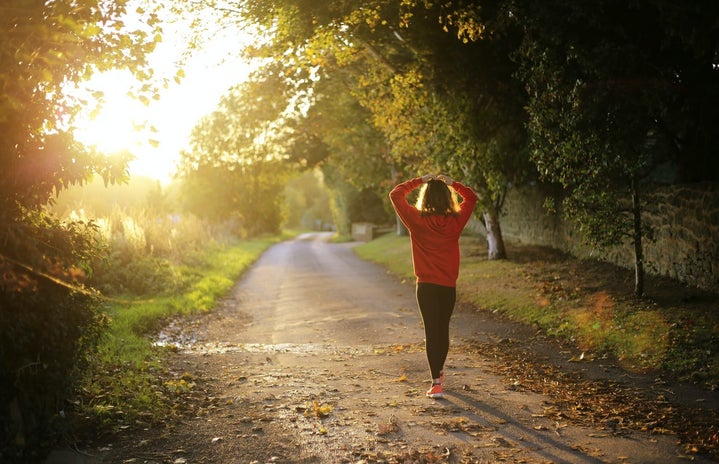There are few worse sensations during the winter than finishing up a late lunch and having to do a double–take at the window—because it’s pitch black outside. If you agree, you can officially say goodbye to that feeling; March 14th marked the start of this year’s Daylight Saving Time. Aside from the visual signal that spring is right around the corner, the effects of DST extend beyond the difference when looking outside.
According to Dr. Lawrence V. Tucker, after the initial loss of an hour of sleep and its short–lasting effects, DST has overwhelmingly positive effects on health and society. For example, the introduction of DST is closely linked to a decrease in depression rates. This can be attributed to the link between depression and excessive REM sleep, which is lessened by a later sunrise and sunset.
Additionally, people generally enjoy more activities when there are more hours of sun. Statistically, more people go on walks and enjoy outdoor activities after DST—both of which contribute to improved well–being. More hours of sunlight and warmer temperatures also encourage physical activity, which in turn drives better mental health.
Increased vitamin D, which comes with more sunlight exposure, is also associated with numerous physical health benefits. Primarily, it plays a role in maintaining a healthy weight, but it also helps to fight off disease by reducing the risk for multiple sclerosis, the flu, and heart disease. Thanks to DST, vitamin D supplements become less necessary when the sun more abundant for free—well, at the cost of the one hour of sleep we lost!
A final physical effect of DST is that the increase in natural light reduces the need for artificial lighting, which can damage the eyes. An American Journal of Public Health study explored the fluorescent light present in many homes and public buildings and found that it has many negative physical effects; DST shortens the number of hours in the day when we need these harmful lights.
In addition to individual health benefits, DST also positively impacts society at large. A study in Accident Analysis and Prevention revealed that fewer car accidents occur when the evening is brighter for longer. In fact, a full year of DST would reduce hundreds of fatalities, especially during the hours when day is shifting to night and vice versa.
Another social impact is a reduction in crime. A MIT study uncovered that, in past years, there’s been a seven percent decrease in robberies after the implementation of DST. Many crimes take place in the hours affected by DST, which could be because this is traditionally the time when work ends and pedestrians walk home or to transportation. Crime naturally decreases in daylight because of the greater chance for facial recognition. The decrease in crime results in many yearly savings for individuals and society.
The origin of DST dates back over a hundred years, and it’s changed significantly even since it was first used. We owe these DST benefits to George Hudson, an entomologist from New Zealand. In 1895, he proposed that a two–hour time shift would allow for more time to work in the summer after the traditional workday ended. In 1902, a similar idea was circulated by William Willet, a British builder looking to limit wasted daylight hours. Germany set the precedent for actually implementing a DST–type change at the beginning of World War I. and other countries, including England and the U.S., soon did the same. Decades after the idea was first introduced to the world, the U.S. Congress put into place the first DST law on March 9th, 1918. Today, the exact effects of this process vary depending on geographical proximity to the equator.
After dealing with the temporary negative effects that occur immediately after the time shift, individuals and society alike enjoy the many upsides associated with Daylight Saving Time. Next time you relish in long–awaited 7 PM sunlight, be sure to appreciate the history behind it!


